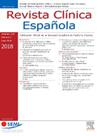自身免疫性疾病与阿尔茨海默病的关联:大数据分析
IF 1.7
4区 医学
Q2 MEDICINE, GENERAL & INTERNAL
引用次数: 0
摘要
目的分析阿尔茨海默病在患有和未诊断出不同自身免疫性疾病的患者中的患病率,以及两种疾病之间可能的联系。患者与方法本研究采用多中心、回顾性、队列研究的方法,对诊断为各种自身免疫性疾病的患者与普通人群的阿尔茨海默病患病率进行了研究。来自Castilla-La Mancha医疗保健系统的电子病历数据通过Savana Manager®人工智能临床平台使用自然语言处理进行分析。总共分析了1,028,356名患者,其中包括28,920名阿尔茨海默病患者和999,436名对照患者。结果12种自身免疫性疾病中,有5种与阿尔茨海默病有显著相关性(P < 0.05)。重症肌无力的AD患病率增加,OR为1.49 (95% CI 1.11 - 2),系统性红斑狼疮的OR为2.42 (95% CI 2.02 - 2.88),类风湿性关节炎的OR为1.38 (95% CI 1.24 - 1.54),风湿性多肌痛的OR为2.01 (95% CI 1.08 - 2.23),恶性贫血的OR为2.06 (95% CI 1.59 - 2.66)。其余的自身免疫性疾病分析并没有显示阿尔茨海默病的患病率高于一般人群。结论某些系统性自身免疫性疾病与阿尔茨海默病可能存在关联。需要进一步的研究来证实我们的发现,建立因果关系,并探索这种关联的潜在机制。本文章由计算机程序翻译,如有差异,请以英文原文为准。
Asociación entre enfermedades autoinmnues y enfermedad de Alzheimer: análisis a partir de herramientas de big data
Objective
The objective is to analyze the prevalence of Alzheimer's disease in patients with and without a diagnosis of different autoimmune diseases and the possible association between both pathologies.
Patients and methods
A multicenter, retrospective, cohort study was conducted to study the prevalence of Alzheimer's disease among patients diagnosed with various autoimmune diseases compared to the general population. Data from electronic medical records from the Castilla-La Mancha healthcare system were analyzed using Natural Language Processing through the Savana Manager® artificial intelligence clinical platform. A total of 1,028,356 patients were analyzed, including 28,920 individuals with Alzheimer's disease and 999,436 control patients.
Results
Out of the 12 autoimmune diseases analyzed, 5 showed a significant association with Alzheimer's disease with P .05. Myasthenia gravis had an increased prevalence of AD with OR 1.49 (95% CI 1.11 - 2), systemic lupus erythematosus with OR 2.42 (95% CI 2.02 – 2.88), rheumatoid arthritis with OR 1.38 (95% CI 1.24 – 1.54), polymyalgia rheumatica with OR 2.01 (95% CI 1.08 – 2.23), and pernicious anemia with OR 2.06 (95% CI 1.59 – 2.66). The remaining autoimmune diseases analyzed did not show a higher prevalence of Alzheimer's disease compared to the general population.
Conclusions
There may be an association between certain systemic autoimmune diseases and Alzheimer's disease. Further studies are needed to confirm our findings, establish causality, and explore the underlying mechanisms of this association.
求助全文
通过发布文献求助,成功后即可免费获取论文全文。
去求助
来源期刊

Revista clinica espanola
医学-医学:内科
CiteScore
4.40
自引率
6.90%
发文量
73
审稿时长
28 days
期刊介绍:
Revista Clínica Española published its first issue in 1940 and is the body of expression of the Spanish Society of Internal Medicine (SEMI).
The journal fully endorses the goals of updating knowledge and facilitating the acquisition of key developments in internal medicine applied to clinical practice. Revista Clínica Española is subject to a thorough double blind review of the received articles written in Spanish or English. Nine issues are published each year, including mostly originals, reviews and consensus documents.
 求助内容:
求助内容: 应助结果提醒方式:
应助结果提醒方式:


